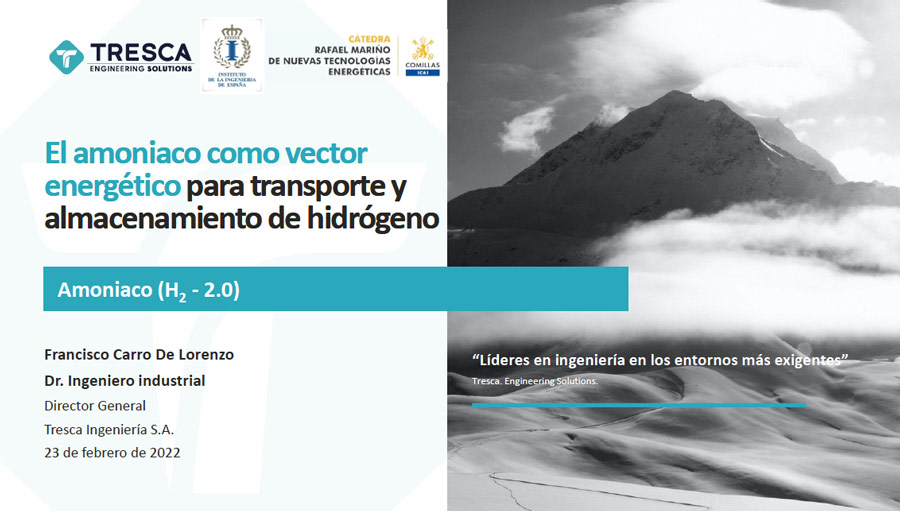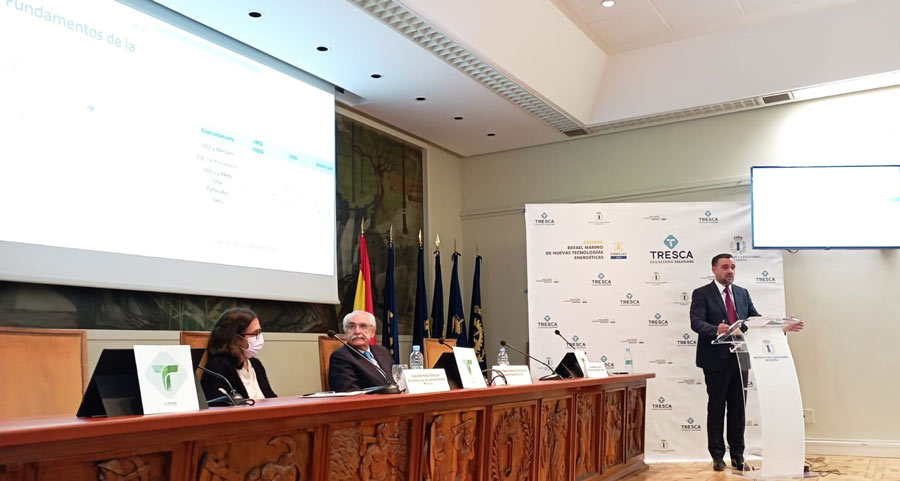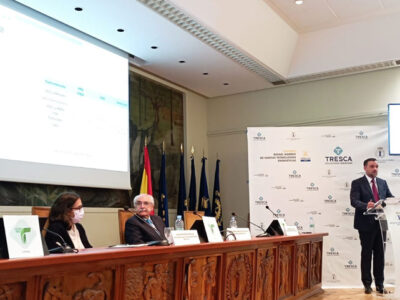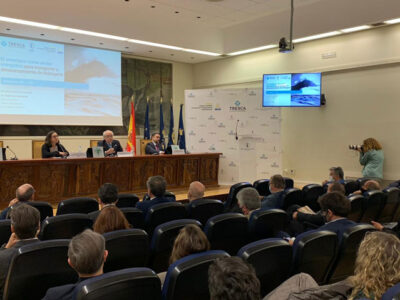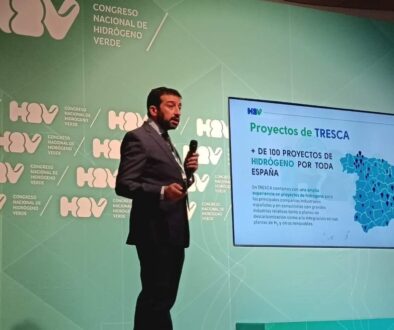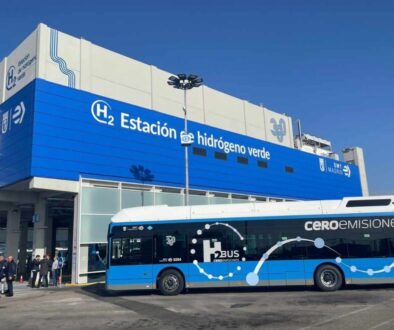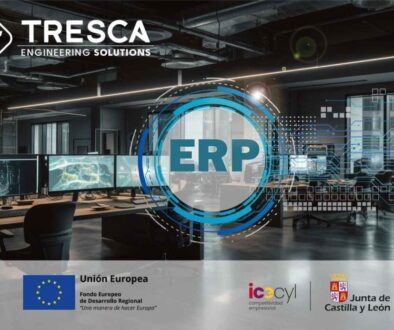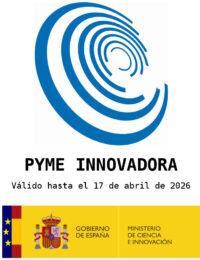Tresca Ingeniería depicts the advantages of ammonia as an energy carrier to achieve the decarbonisation of industry
The CEO of Tresca Ingeniería, Francisco Carro de Lorenzo, has given the lecture ‘Ammonia as an energy carrier for hydrogen transport and storage‘ at the Spanish Engineering Institute.
Madrid, 23 February 2022.
Francisco Carro de Lorenzo, CEO of Tresca Ingeniería, has delivered this Wednesday, at the Spanish Engineering Institute in Madrid, the lecture ‘Ammonia as an energy carrier for hydrogen transport and storage,’ organised by the Rafael Mariño Chair of New Technologies of ICAI. The main objective of the speech was to show the properties and competitive advantages of ammonia as an energy carrier that will facilitate the decarbonisation of industry and improve the management of renewable energies.
During the lecture, the ways under consideration to achieve green ammonia production (without greenhouse gas emissions) with the aim of reducing the carbon footprint of the fertiliser industry and the rest of products derived from ammonia were detailed, as well as the potential future uses of this product as an energy “carrier” given its capacity to “become an easy and simple system for storing and transporting hydrogen,” as Carro stated. Ammonia has become an element that may be used to store, distribute and transport green energy and supply electricity to the grid at times when renewable sources do not produce the necessary energy: at night or on days with no wind.
Thus, Tresca Ingeniería’s CEO explained that
“hydrogen from water and nitrogen from air have the potential to combine to transport energy more easily and efficiently when mixed in ammonia than other possible energy carriers.”
This is because the ammonia energy density is much higher than that of hydrogen (calories per cubic metre increase significantly) and less space is therefore needed to store energy. This characteristic opens the door to the use of ammonia as a fuel for high-volume, long-distance transport, as in the case of maritime transport, where engines are already being tested to replace fuel oil in ships with ammonia mixed with other fuels (fossil fuels, biofuels or hydrogen itself).
The basis of all this development, as Carro pointed out in the speech, is that ammonia can be produced without using fossil fuels (today between 1.6 and 2.3 tonnes of CO2 are emitted per tonne of CO2 produced), which will reduce the carbon footprint of the industry and thereby enable its decarbonisation process. Francisco Carro explained that
“ammonia can be produced right now with hydrogen and nitrogen from the use of renewable sources: solar or photovoltaic energy. In this way, both hydrogen and nitrogen are generated without the need to emit CO2 into the atmosphere. And with green nitrogen and hydrogen, CO2-free ammonia is produced, i.e. green ammonia.”
Process
Tresca Ingeniería’s CEO pointed out that one of the issues facing the industry currently is that of having an energy source that can help manage renewable energy sources for electricity that are already being deployed. “An accumulated energy source is needed, and in this sense, ammonia (because of its nitrogen and hydrogen composition) is to solve this problem. You can guarantee the supply of electrical energy needed. Nitrogen and hydrogen will combine without any fossil energy source, from electrolysis of water and the application of systems for separating nitrogen from air.
With nitrogen and hydrogen, you can produce ammonia by the well-known Haber-Bosch process, but conversely also by thermal cracking of ammonia. By subjecting the molecule to high temperatures, you can break it apart and get back hydrogen that can be used as a fuel or applied directly in so-called fuel cells for electricity production. But ammonia can also be used directly as a fuel. For example, in turbines, reciprocating engines, boilers, but right now all this is under development.”
Use in industry
“Right now, 80% of ammonia is being used in the fertiliser industry, but there is also an important part used to manufacture plastics, in the pharmaceutical industry (precursor for amino acids), to produce explosives, cleaning and disinfection liquids, dyes, coolant or to reduce nitrogen oxide emissions (NOx): in the combustion processes of boilers or industrial furnaces or in the exhaust of car engines, ammonia is used to reduce NOx emissions and convert them into inert N2,” said Tresca Ingeniería’s CEO.
Such uses show that
“the ammonia industry is well established and its processes and logistical chain are strong, safe and reliable,”
according to Carro. He also stated that now “the expertise and infrastructure of the ammonia industry can be used to deploy the future green industry based on hydrogen stored in the form of ammonia.”
About Tresca:
Tresca Ingeniería is a company from León that offers top services in the industrial engineering and consultancy field. With a consolidated track record of 20 years, Tresca Ingeniería has worked in up to 30 countries around the world in key industrial sectors and has become a benchmark company in industrial applications and green hydrogen mobility and, consequently, a standard bearer for this resource to achieve climate neutrality and the economy and industry decarbonisation.

